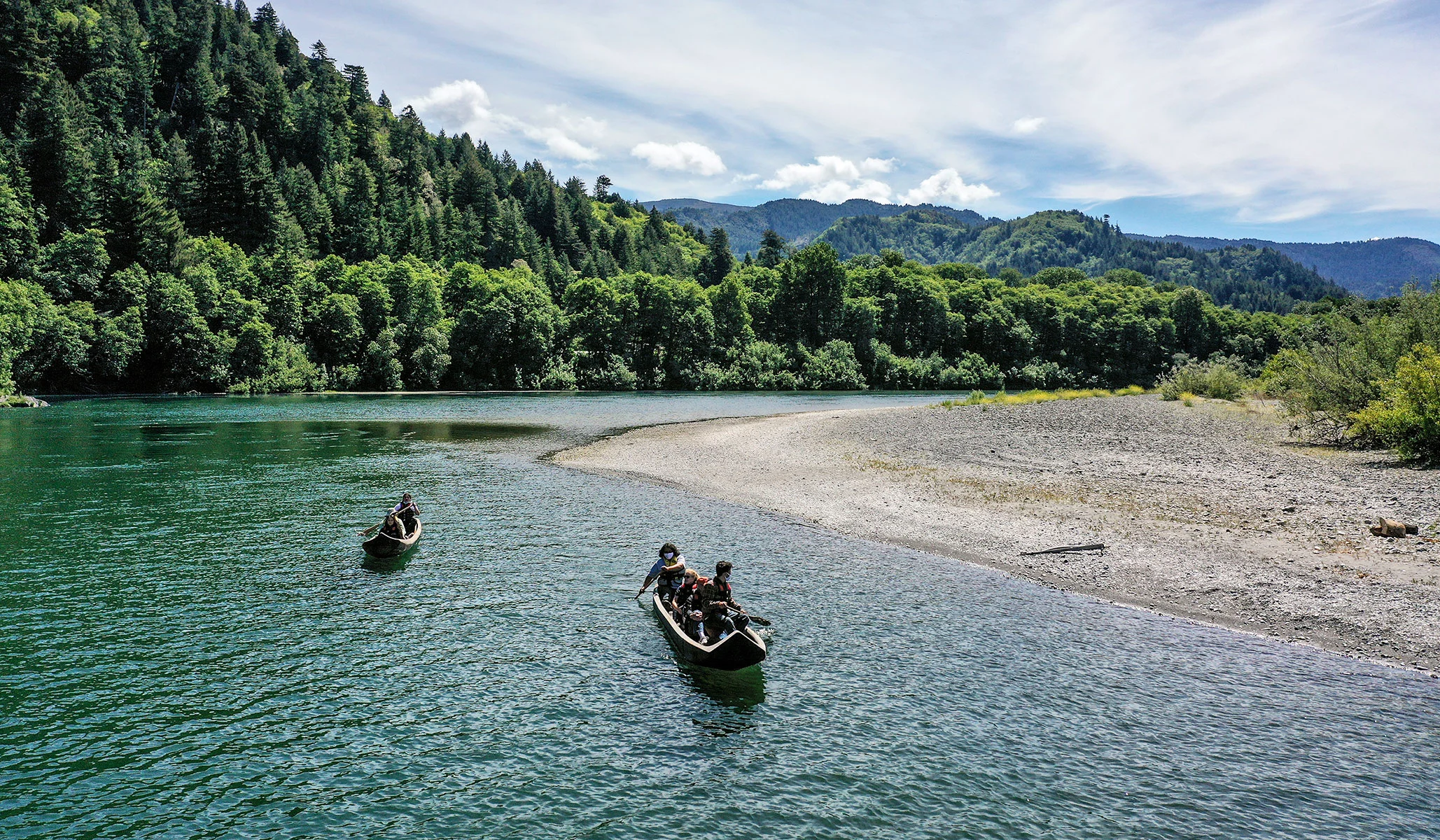The Klamath River, the largest river between the Columbia and Sacramento-San Joaquin, covers 12,000 square miles. The river’s headwaters in southern Oregon run south through high desert before bending west to traverse deep canyons in California’s coast ranges, eventually finding the ocean just south of Eureka. Historically, millions of salmon ran up the Klamath each year to spawn in the cool gravel beds of its upstream tributaries. Today these salmon populations are reduced to a small fraction of their historical numbers, and attempts to revive salmon populations on the Klamath have triggered a war for the watershed’s future.
On one side are environmentalists and state bureaucrats, who have brought unlimited funds for lawfare and punitive regulations. On the other side are farmers and ranchers who have operated for over a century in the region, attempting to survive on thin profit margins in an era of increased costs and the relentless regulatory assault on their ability to subsist.
To understand the war for the future of the Klamath, one must recognize the differences between the upper and lower watersheds. They are distinct ecosystems with differing topography, geology, climate, water quality, and species. Historically, much of the water running down from headwaters in Oregon into the upper Klamath River never made it into the lower river and hence to the ocean. Instead, year after year during floods, runoff overflows the riverbanks and pours south into the Tule Basin, a vast wetland that straddles the border between southern Oregon and northeast California.
This all changed with the Klamath Project, a series of dams, canals, and levees constructed just over 100 years ago to reclaim rangeland and wetland for farming. In all, the project created over 200,000 acres of farmland. The centerpiece of the Klamath Project is the Link River Dam, which regulates the volume and downstream flow of the Upper Klamath Lake. And herein the conflicts begin, with farmers prioritizing diversions into the upper basin to irrigate their crops and maintain wildlife refuges, while also recharging aquifers, and environmentalists demanding that more water be allowed to flow downstream in hopes of a healthier aquatic ecosystem for salmon.
The farmers, lacking the financial resources of powerful environmentalist NGOs and state bureaucracies, have not been able to fund the army of consultants, academic experts, and litigators that would be necessary to effectively resist the state and federal edicts that redirect upper Klamath runoff downstream. But they nonetheless make a compelling case for themselves. It begins with the volume and quality of water they’re fighting over.
The topography of the upper Klamath was defined over the past half-million years, as volcanic eruptions generated lava flows that intersected the river, depositing phosphate-rich ash that leeches contaminants into the river to this day. This water has historically stayed mostly in the upper basin, where it is adequate for farm irrigation and the native fish species that are adapted to it. By channelizing the upper Klamath and sending most of the water downstream, the phosphate-rich water nourishes algae blooms that deplete the oxygen and harbor parasites, both of which are harmful to salmon.
The plans to remove four mid-river dams are the culmination of a bitter fight that has raged for over 20 years. The Federal Energy Regulatory Commission (FERC) granted a license to Klamath River Restoration Corporation (KRRC) to demolish the dams. Their original operator, PacifiCorp, had been looking for a way to get rid of them ever since being ordered by FERC in 2007 to install fish ladders on the “fish-killing” dams. Facing a cost to install fish ladders that would exceed the cost of removing the dams, PacifiCorp managed to avoid both by ceding control of the dams to KRRC, in a deal that shifted the estimated $450 million cost of dam removal to the taxpayers of California and Oregon.
Removing the four dams has some obvious attendant harms. Over 70,000 households purchasing cheap hydroelectric power from these dams will face much higher utility rates, as their power will now have to be imported from wind farms and coal-fueled power plants in Wyoming. The water stored behind these dams was used to maintain stable summer flows in the lower Klamath, and once they’re gone, environmentalists will call for more restrictions on water allocations for farmers upstream in order to reserve water in the Upper Klamath Reservoir for summer releases into the lower river.
Instead of removing these dams, there are more cost-effective mitigation projects that might help the salmon. For example, on the Salmon River, banks could be regraded to restore the narrow channel that was lost in the devastating flooding of 1964. Some of the salmon decline can be traced to that event, which altered the tributary’s hydrology, making it less hospitable to salmon migrating to their spawning grounds. Another approach would be to periodically restrict fishing and disperse the populations

